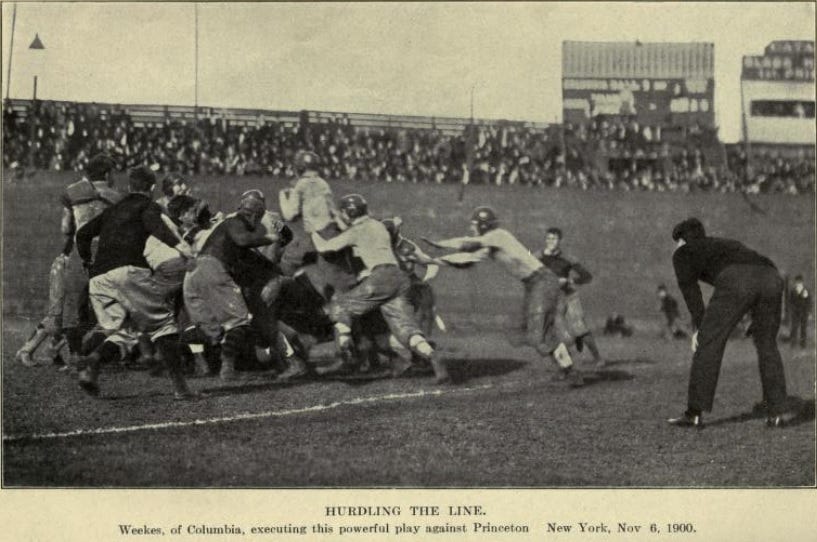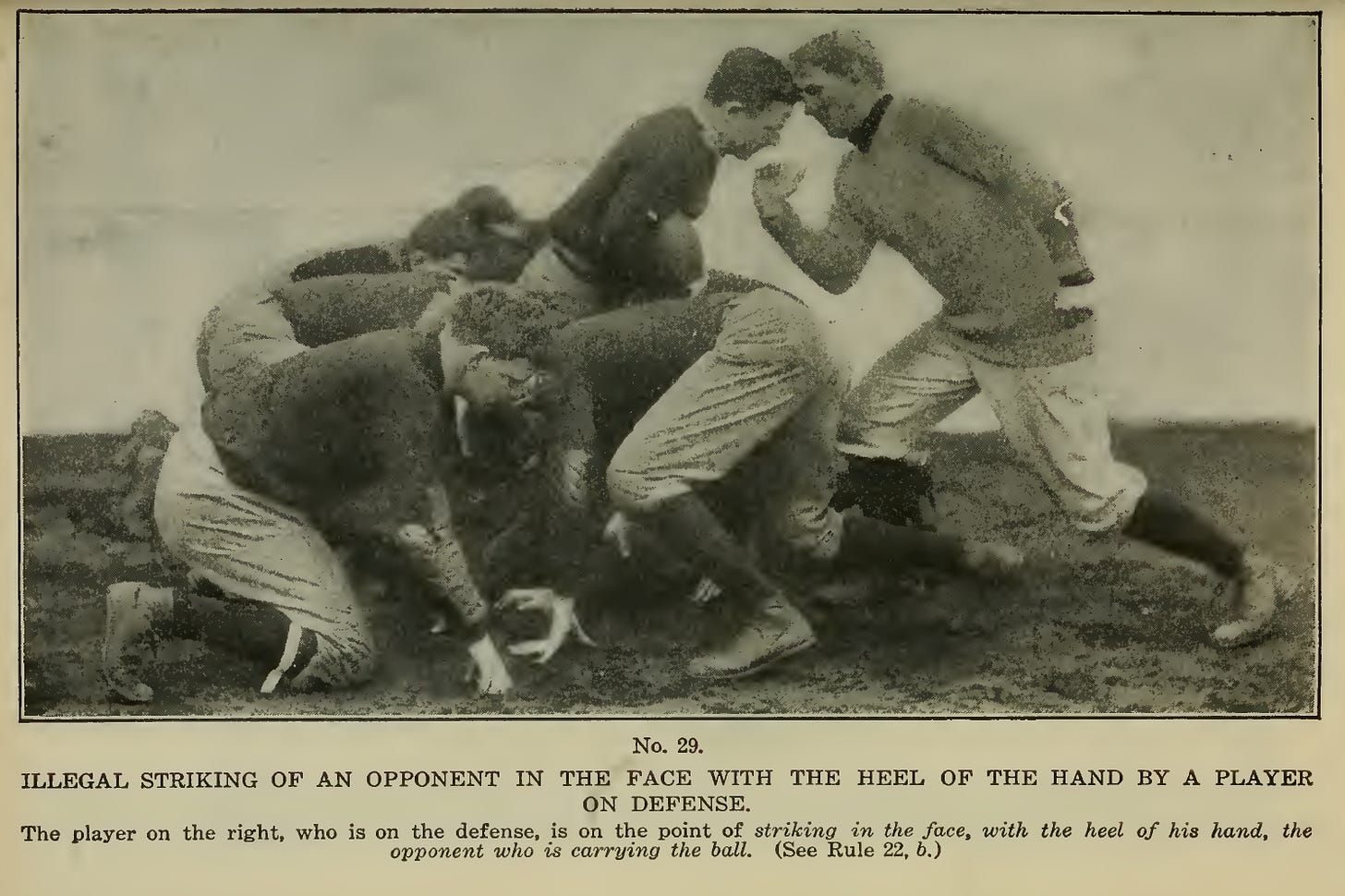Today's Tidbit... Facing A One-Year Suspension
Some consider today's penalty for targeting - disqualification for the current and next half - to be excessive, but that penalty is mild compared to one recommended in 1906. The 1906 rules committee emphasized removing foul play from the game as part of the effort to make football safer. That emphasis was reflected by the rule of the time called for tossing players from the game for unnecessary roughness, including:
Striking with the fist or elbows
Kneeing
Kicking
Meeting with the knee
Striking with the locked hands by line men, when they are breaking through
Defenders striking the ball carrier's face with the heel of the hand
Striking with the heel of the hand developed in reaction to ball carriers such as Columbia's Harold Weekes hurdling over the line -sometimes feet first. Defenders could not legally punch the runner in the face, but they could legally strike the ball carrier with the heel of the hand until it was also made illegal. Below is an image of Weekes flying over the pile and a subsequent rule book illustration of heeling the face.
Rules against foul play and the disqualification penalty had been around for a while. Still, the 1906 rule committee went a bit further by recommending that players disqualified from two games in a season should be banned from football for one year from the date of the second disqualification.

I could identify only two situations in which players qualified for this suspension. In one case, a Harvard player who had been disqualified earlier in the year earned another DQ against Dartmouth. However, knowing the Harvard man faced suspension for the remaining games, the Dartmouth captain declined the penalty to allow the Harvard player to play in the coming Yale game.
Although declining the penalty was generally seen as an act of sportsmanship, the rules committee saw it differently and subsequently passed a rule that fouls resulting in disqualification could not be declined.
The other situation involved Allie Miller, Penn's captain, in 1909. It seems Miller played rather loose with his fists, which was not a favored trait when playing in a game officiated by Big Bill Edwards. During an October game in which Penn tied Penn State, Edwards caught Miller's fist in contact with a Nittany Lion's face, leading Edwards to toss Miller from the game and exact the half-the-distance penalty.

Four weeks later, Edwards was on the field again officiating the Penn-Cornell game when Miller's fist once again landed on an opposing player's face. Again, Edwards saw the foul and booted Miller from the game.
Alas, Miller was a senior playing his last collegiate game, so while he qualified for the one-year suspension, his college career ended without him facing the suspension he earned.
Since the rules committee removed the recommended suspension from the rule book in the early Teens, it does not appear that a player both qualified for and faced the recommended one-year suspension.
Football Archaeology is reader-supported. Click here to buy one of my books or otherwise support the site.





